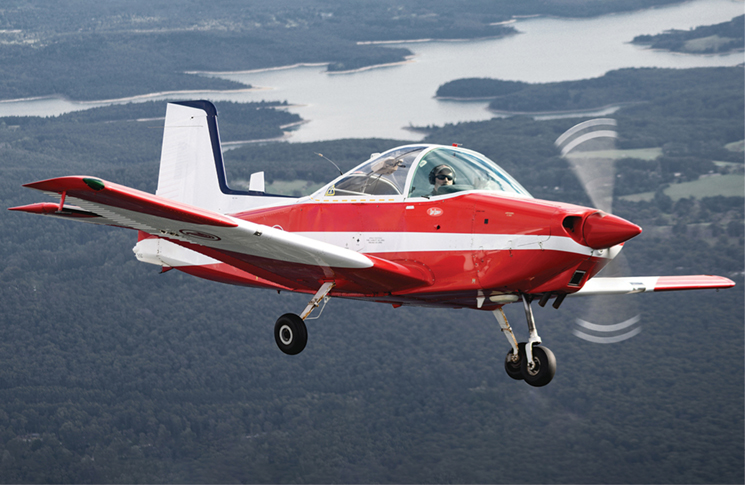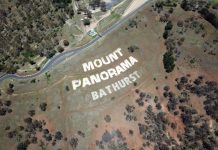Subtle psychological pressures and an unintentional signal almost killed this experienced flier in the first hours of their career.
Whichever way you look at it, our pastime or profession is dominated by and reliant on numbers. Large or small, committed to memory or easily found or sighted, they play a critical role. Pilots, especially, rely on a set of memorised numbers to achieve safe operations in all aspects of flight.
I had always wanted to fly since knee-high-to-a-grasshopper days and flying continued to be a huge interest when growing up. When I entered the workforce in my late teens, my pay packets funded flying lessons. My initial training to a Restricted PPL was on a Victa Air Tourer.
Before starting circuit training, the CFI, an ex-WWII Instructor and devotee of Tiger Moths and Chipmunks, conducted a progress check flight and introduced me to stalls. The exercise began in the approved aerobatic area with an upper limit of 5,000 feet AGL, to ensure recovery of any manoeuvre by 3,000.
Various stalls were demonstrated and recoveries practised to the required standard. Then the instructor said, ‘Would you like to see a few aeros?’ I was keen to go and the Victa was fully aerobatic. Five minutes of looping and aileron rolls left me on cloud nine.
Weeks and weeks of circuit training before soloing left me anxious to return to the training area. I was keen to experience the satisfaction of an extended solo flight polishing up the more advanced manoeuvres.
On the day of this incident, the solo training area sortie progressed normally. The weather was fine with excellent visibility and nil cloud. After completing some steep turns which I judged to be of acceptable standard (cutting my own slipstream), I decided on the spur of the moment to climb into the aerobatic area and try something the instructor had demonstrated months earlier. I remembered the basic dimensions of the area but was unaware that a clearance was required.
The HASELL (height, airframe, security, engine, location, lookout) checks were completed at 4,500 feet and I flew straight and level at full throttle, 2,600 RPM, to build up speed, then lowered the nose slightly to increase the IAS to 112 knots. Raising the nose smoothly to about 15 degrees above the horizon, still with full throttle, I applied full left aileron to do a roll as the instructor had done. Around I went.
The next minute I was assailed by a deafening roar and a frightening sight – I was descending vertically!
The next minute I was assailed by a deafening roar and a frightening sight – I was descending vertically! The screaming was from the engine, still at full throttle and showing 3,500 RPM! A glance at the ASI showed 173 knots, at the upper extremity of the yellow arc and just on VNE, and I was in all sorts of potential trouble. The next sequence of thoughts and actions happened very quickly.
First, I closed the throttle and initiated recovery from a vertical dive at VNE. I was conscious that I must not overstress the airframe, so back pressure was applied quite gently. Slowly the nose came up and I recovered to straight and level, still power off, by 1500. That was a really frightening experience and a monumental tumble of numbers – 4,500 feet, 2,600 RPM, 112 KIAS, 173 KIAS, 3,500 RPM, 1,500 feet. I made my way back to the aerodrome much chastened by the episode and said nothing until now.
What went wrong? The entry into the aileron roll was correct up to the point when nearly inverted. Back pressure should have been reversed there and forward pressure applied to keep the nose up, then relaxed to neutral when upright again. Instead, I had maintained the nose-up back pressure throughout the manoeuvre, resulting in a pull through from inverted flight, still with full power! It wasn’t until many years later that I became aware of engine overspeed events that should have been reported.
Fast forward some years and I was a Grade 1 instructor and CFI, imparting knowledge and experience to students eager to learn. Foremost in my endeavours was a desire to instil a culture of ‘airmanship’ and that all-encompassing aspect of safety in every flying operation. It was drilled into students never to venture beyond their known and demonstrated abilities, most typically being flight into IMC conditions, and a less frequently understood condition of manoeuvring outside the normal flight envelope.
Lessons learnt
In what way was the CFI remiss with the training all those years ago? I’ve had many years to mull over this. I think he was intent on reliving his glory days and really just wanted to show off to impressionable students. Not really the thing to do with a beginner pilot and a very valuable lesson to ponder on. Instructors take note!
Have you had a close call?
8 in 10 pilots say they learn best from other pilots and your narrow escape can be a valuable lesson.
We invite you to share your experience to help us improve aviation safety, whatever your role.
Find out more and share your close call here.






Comments are closed.